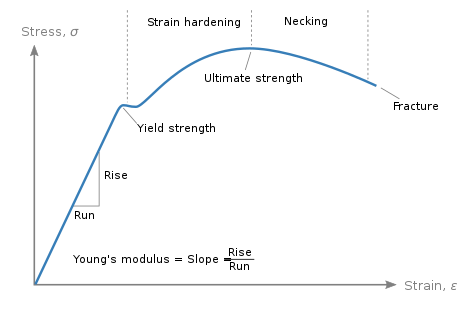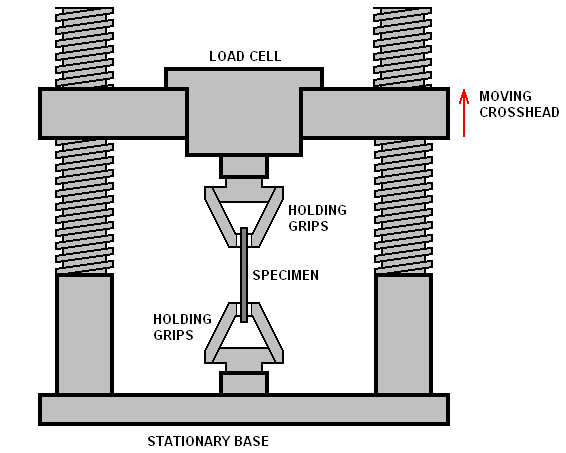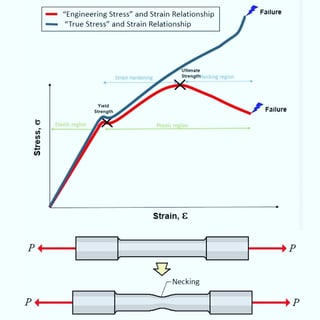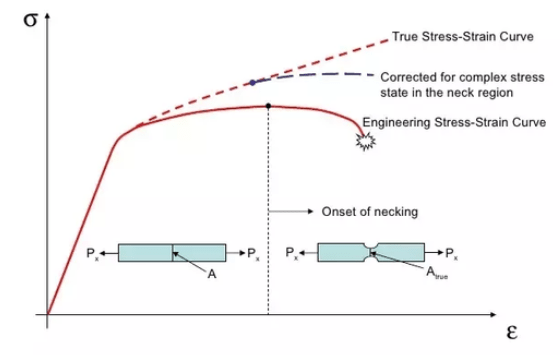A significant barrier to my understanding of typical engineering stress vs. engineering strain curves is that for certain values of stress, there are multiple values of strain (i.e., the stress-strain curve is not invertible in the mathematical sense). This is an issue for me because in my mind, I make sense of stress-strain curves in terms of the tension test I'd conduct to make the plot. I imagine that in a tension test, tension is added to a specimen incrementally and at each increment, the specimen's strain is noted.
This simple experiment must provide a curve that is 1:1 in that every tension value corresponds to one strain value (and vice versa). Therefore, this experiment cannot lead to the tensions that correspond to the specimen's necking region which for one tension value have two strain values.
How must I modify my view of the tension test used in obtaining experimental stress-strain curves to improve my understanding of what the curves are working to communicate? I am sure most of you reading this know the typical stress-strain figure I have in mind, but I have provided a basic example from Wikipedia below just in case:



